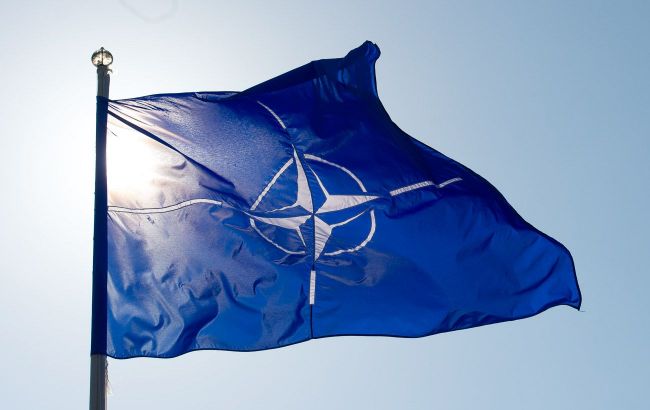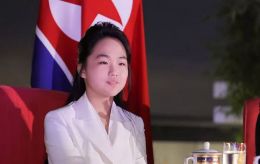Eastern NATO countries increase defense spending to $70 billion - Bloomberg
 NATO flag (Illustative photo: Getty Images)
NATO flag (Illustative photo: Getty Images)
Collectively, 14 NATO member countries in the east have increased their defense spending to unprecedented levels following Russia's invasion of Ukraine. This year alone, their defense expenditures amount to $70 billion, reports Bloomberg.
Currently, there is an ample supply of military equipment on NATO's eastern flank. However, orders for aircraft, helicopters, tanks, and missile systems have highlighted the significant work still needed to meet NATO standards during the most dangerous times since the Cold War.
In replacing the Soviet equipment that has been sent to Ukraine, NATO is working to rapidly enhance the military capabilities of most countries that have been neglected for decades. This neglect stemmed from a shift in focus away from defense following the dissolution of the Warsaw Pact and the end of the Balkan wars.
Bloomberg notes that Eastern NATO countries are among the highest in defense spending relative to the size of their economies. However, according to interviews with senior military officials, this is only a small fraction of what is necessary. Subsequently, personnel with the appropriate skills will be required for the new equipment.
"After doing almost nothing in this area for 20 years, it’s basically a jump from first or second-generation machines straight to fourth or fifth generation. It’s like going from a 386 processor computer to today’s most advanced multi-core network solutions," said General Daniel Zmeko, chief of staff for Slovakia’s armed forces.
Bloomberg also reminds us that Donald Trump, during his presidency, sharply criticized NATO members for relying too heavily on the US.
In 2021, a year before Russia's full-scale invasion of Ukraine, only the UK among the major economies met the alliance's target of 2% of GDP for defense spending.
Recently, Mark Rutte, on his first day as the new NATO chief, urged Alliance members to invest more and address capability issues.
Poland and Estonia lead in NATO spending
NATO's eastern flank was first stirred by an increase in military spending when Russia annexed Crimea in 2014 and then shifted gears. Estonia, for instance, has spent more in the last 18 months than it did in the previous 30 years.
However, critics argue that Eastern Europe is only now beginning to make the investments that should have been made since the first of the NATO countries joined in 1999. Instead, they relied on their Western allies, while governments focused their attention on more popular expenditures for improving things like telecommunications networks, transportation, and housing.
Countries have reduced their defense capabilities, often to a fraction of what they had during the Warsaw Pact era against NATO's communist adversary. According to Zmeko, Slovakia, for example, now has only 30 tanks compared to 960 when it separated from Czechoslovakia in 1993.
Estonia's Minister of Defense noted that the issue lies in a chronic spending deficit. Currently, the country bordering Russia allocates 3.4% of its GDP to defense.
"The problem is that we have not been on 2% in the last 30 years, we were at 1% and some countries even under the 1% threshold. And that means that the taxpayer’s burden has sharply increased," the Estonian Defense Minister stated.
According to estimates from the military alliance, this year five out of seven NATO countries will account for the highest defense spending as a percentage of GDP.
Poland ranks first, surpassing 4% of GDP. Less than a month after the invasion of Ukraine, the parliament approved legislation that increased the budget and established a special fund for financing costly procurements.
Orders include dozens of fighter jets, over 1,300 tanks from South Korea and the US, and 100 AH-64E Apache attack helicopters from Boeing Co., amounting to $10 billion, marking the largest procurement in Poland's history. In August, the government signed a $1.2 billion agreement with Raytheon Technologies Corp. for the production of components for the Patriot air defense system.
"This is a time that Poland hasn’t had in decades. Looking at the development of the armed forces, then in my opinion we will be one of the stronger armies — certainly in this part of Europe, but also in NATO," stated Brigadier General Grzegorz Potrzuski, Poland’s chief of land forces field artillery.
Additionally, Poland has committed to doubling the number of professional soldiers by 2035, increasing it to 250,000. As of the end of 2023, the military added about 20,000 personnel, bringing the total to 134,000.
In conclusion, Bloomberg notes that understanding the extent of the pressure on regional state budgets will become clearer later this year when NATO member states present their new defense plans, including spending commitments through 2044.
NATO 3.0.
Yesterday, Alexander Stubb, President of Finland, announced the formation of NATO 3.0. He emphasized that in the current geopolitical climate, the Alliance is returning to its original purpose for which it was created, particularly focusing on deterring threats from the East.
"I firmly believe that we are now witnessing the creation of NATO 3.0. We are back to the original role of NATO as a deterrence and strong military alliance with a threat coming from the East, mainly from Russia. We have a very common understanding inside the Alliance about our security challenges, and I think it is extremely important now that we work on both – deterrence and defense," stated Stubb.

